Building on the shift from transactional vendors to strategic partners, the second part of our series dives into how collaboration works in practice.
We explore strategies for effective supplier-provider partnerships, key European initiatives, procurement considerations, and the inspiring example of Maria Middelares hospital. Learn how startups and suppliers co-create solutions that improve patient outcomes, streamline operations, and generate lasting value.
Strategies for Effective Collaboration
Founded in 2000, GHX pioneered healthcare’s leading cloud-based supply chain network, which today connects tens of thousands of healthcare organizations across the globe. Over the last two decades, GHX has continued innovating alongside a passionate community of healthcare providers, suppliers, distributors and other industry stakeholders, all united around a common purpose: to simplify the patient-centered business of healthcare to improve outcomes. According to a 2024 GHX industry analysis, hospitals that collaborate closely with suppliers can reduce supply chain overhead by up to 15%.[1]
Key elements of successful collaboration include:
-
Joint KPI development
-
Onsite training and implementation support
-
Regular performance reviews
-
Integration with hospital IT and procurement systems
By investing in these mechanisms, vendors demonstrate commitment and responsiveness—qualities hospitals increasingly require.
The EU is currently carrying out several initiatives strengthening supplier-provider collaborations. Key is the European Health Data Space (EHDS) Initiative
The European Union's EHDS, effective from March 2025, aims to create a unified digital health data infrastructure across member states. This facilitates seamless data exchange, promoting collaborative research and innovation between healthcare providers and suppliers.
Europe's healthcare analytics market is experiencing significant growth, driven by the adoption of Electronic Health Records (EHRs) and the need for data-driven decision-making. This trend underscores the importance of partnerships that leverage analytics to improve patient outcomes and operational efficiency.
Despite the clear benefits of closer collaboration, several challenges hinder the evolution of vendor-hospital relationships in Europe.
-
Technical issues such as data and technology silos, disparate health systems and challenges in measuring impact, limit vendors’ ability to scale partnership models across borders.
-
Cultural and organizational resistance and procurement constraints can stall collaboration.
By addressing these barriers—through better data governance, adaptive procurement strategies, and clearer value metrics—Europe can unlock the full potential of vendor-provider partnerships to improve care and efficiency.
Procurement Considerations
Rigid public procurement rules often favour lowest-cost bids over long-term value creation. Innovative contracting models like value-based agreements struggle to fit existing frameworks. However, hospital procurement is (slowly) evolving from lowest-cost bidding toward value-based selection. A 2022 systematic review in BMJ Open found that hospitals are increasingly using multi-criteria decision-making approaches to evaluate device purchases, considering clinical outcomes, support services, and long-term value. This underscores a shift towards more comprehensive, multi-criteria decision-making processes in hospital procurement, considering a range of factors beyond just cost. [2]
Case : Maria Middelares
The vision of Belgian vzw Maria Middelares, one of the country’s most innovative hospitals, reinforces this trend. Their innovation framework emphasizes compatibility with electronic medical records, better clinical outcomes, patient experience, and staff satisfaction. They expect vendors to offer open access to clinical environments, co-develop solutions with clinicians, and contribute to tangible patient and hospital value. Their partnership model values transparency, operational efficiency, clear expectations, and shared risk—transforming the vendor from a service provider into a strategic ally.
Maria Middelares' "value equation" articulates a holistic view of what makes innovation partnerships between healthcare providers and vendors effective. It underscores that success relies on active contributions from all parties—clinicians, leadership, and solution providers—working together toward shared goals.
The hospital delivers value through a robust infrastructure and a deep commitment to innovation. It provides space for development, offering physical and organizational environments where vendors can build and refine their solutions. The hospital contributes in-kind resources that support product development and pilot testing without excessive upfront costs. It also offers essential business development opportunities. By involving vendors in strategic initiatives and enabling exposure to real-world clinical settings, it helps refine go-to-market strategies and facilitates market entry. This extends to supporting the development of proof-of-concept models that validate a product’s clinical and operational relevance.
In addition, Maria Middelares provides structured access to advisory boards and clinical trials, allowing vendors to align their offerings with evidence-based practice. This collaborative research environment enhances credibility and accelerates innovation. Furthermore, the hospital supports optimization of business processes, publication of clinical and performance results, and participation in market research efforts. These contributions strengthen the vendor’s value proposition and foster a culture of continuous learning and shared success.
From the vendor or startup side, value begins with innovation and entrepreneurial drive. Startups bring unique ideas to the table—often solutions inspired by unmet clinical needs or novel approaches to long-standing problems. Their contributions include access to new markets and user groups that Maria Middelares may not reach on its own, as well as connections within the tech and investor ecosystem that can accelerate development.
Startups also contribute prestige through their agility, visibility in the innovation landscape, and association with cutting-edge progress. They often bring advanced technology, including digital tools, sensors, or AI-driven platforms that can transform care delivery. Practical benefits such as site licences, integration-ready tools, and demonstrable cost-saving potential make these contributions particularly valuable to a hospital navigating budget constraints and operational pressure.
Shared value lies at the intersection of both partners' contributions. Together, Maria Middelares and its startup partners unlock access to critical clinical data, create opportunities for engagement with expert clinicians, and benefit from mutual advice and support throughout the innovation lifecycle. These partnerships build strong communities and facilitate connections to broader networks and funding channels. When aligned effectively, these collaborations lead to better patient outcomes, generate truly innovative ideas, and open up new markets for both providers and innovators.
This is the essence of the Maria Middelares value equation—true collaboration grounded in mutual value creation.
Conclusion
The most successful healthcare suppliers in 2025 are no longer just vendors—they are solution architects, embedded advisors, and efficiency enablers. Providers that embrace these partnerships stand to gain in both patient outcomes and operational sustainability.
This blog post is part 2 of the Vendor to Partner series. Did not read the first part?
At Living Stone, we’re experts at marketing strategy, including branding en positioning. Contact us today and find out how we can help you with the branding & positioning of your organization.
Contact Anne-Mie Vansteelant 👉 anne-mie.vansteelant@livingstone.eu
Disclaimer on Content Development
This blog post was developed using generative AI (ChatGPT) based on detailed prompts and editorial guidance from the Living Stone team. It draws upon presentations delivered during a session of Ghent HealthTech Tuesdays #9 at WATT the Health in May 2025 and incorporates insights tailored to the strategic and commercial needs of marketing and sales professionals in the healthcare technology sector. The final text has been curated and refined by human editors to ensure clarity, relevance, and alignment with market expectations. All referenced sources have been verified for credibility at the time of publication.
End Notes
[1] GHX. "Healthcare Provider and Supplier Collaboration: Unlocking Better Outcomes." 2024. https://www.ghx.com/the-healthcare-hub/collaboration-healthcare-providers-suppliers
[2] BMJ Open. "Purchasing High-Cost Medical Devices and Equipment in Hospitals." 2022. https://bmjopen.bmj.com/content/12/9/e057516



